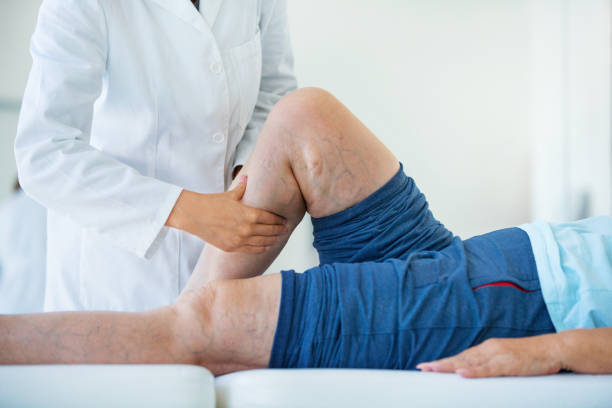All You Need To Be Aware Of Varicose Veins

Varicose veins are a serious condition that may cause pain, itching and heaviness on the legs. If varicose veins in the venous system are not treated, they can cause complications like venous ulcers. Health experts don't know exactly the causes of varicose veins. Varicose veins can be a family issue. It is also believed that they affect women more frequently, possibly due to the fact that oestrogen levels relax vein wall.
The symptoms
They're large, curving blood vessels that are visible under the skin. If vein valves cease working correctly, they may result in varicose veins. This causes increased pressure as well as a weakening of vascular walls in time. Some risk factors are genetic history of varicose vessels in the family as well as aging, standing for long periods of time, and weight gain. It can be accompanied by mild swelling of the feet and legs, burning of the legs as well as cramping, throbbing or burning sensations; and a heavy feeling on the legs. If you need to have much more information concerning Varicose Veins, you may go to https://swiatzdrowia24.pl/proveiner-forte-recenzja-kapsulek-na-zylaki-nog/ site.
Varicose veins typically are not an issue however, it is important to seek them out when you feel bleeding or discomfort. If the condition is severe blood clots within veins may break loose and spread into the lung (pulmonary embolism) this is a serious medical condition. The doctor who treats you is likely to conduct a physical exam of your legs, taking a look at the visible veins and asking you to explain any pain or aching. The doctor may also suggest an examination called Doppler ultrasound of the leg. It uses sound waves to check blood flow.
Diagnostics
The varicose vessels are usually stretched and dilapid. They appear in the lower part of the leg. The cause isn't clear however it could result from wear and tear on the valves controlling the flow of blood in your veins as well as from fluctuations of hormones. Varicose veins in women are much more frequently than males due to hormonal changes in women can cause relaxation of the vein walls while menopausal pregnancy and menopausal symptoms boost blood flow and put pressure on the veins. Other risk factors include:
The doctor who treats you will be able to diagnose varicose veins through the physical examination. The doctor will ask you questions about the symptoms you are experiencing and then observe your legs when they stand. Your provider might also recommend the Doppler ultrasound scan in your leg. This is a painless test that uses sound waves to measure blood flow through the veins. This test can detect blood clots within veins that could lead to serious illnesses including pulmonary embolisms (a obstruction of the lungs). Angiograms are a more thorough test which requires injecting dye into the veins, and then examining them with the x-ray image.
Treatment
If the valves that are one-way in the veins in your body, that transport blood to your feet do not close correctly there is a possibility of developing varicose veins. Blood backs up and enlarges the veins. These can cause swelling in the legs, pain loss of weight, and skin changes. In time veins can create massive blood clots. If not treated, the clots can break off and travel into the lung (pulmonary embolism) that can be life-threatening.
An early diagnosis is an easy solution to relieve discomfort and keep varicose veins from becoming worse. The compression stockings you wear can assist your veins and muscles to circulate blood. You can buy these in most pharmacies as well as medical supplies stores.
Other treatments include sclerotherapy, in which a special solution is injectable into the varicose vein. The vein will scar and end up bursting. This forces the body to channel blood toward the healthy veins nearby. Doctors may suggest surgery, called ligation and stripping. This is where the varicose vein is tied off and removed through small cuts to your skin.
Prevention
They're not an medical emergency but they can be painful and cause swelling. You can prevent new ones in the future from developing by strengthening your legs, not walking with your legs crossed when sitting and wearing loose clothing. If it is possible, also try to avoid standing all day long.
Alternative ways to prevent it include eating greater amounts of fiber in order to improve regularity and lessen stress on your blood vessels. Diets that are low in fiber could result in hard, dry stools which force your body to strain through bowel movements, and also weaken blood vessels.
The compression stockings are used to aid in blood flow and reduce swelling. These are sold in many drugstores and medical supply shops. The doctor may recommend more the procedure if changes in lifestyle do not work. As an example, MedStar Health offers radiofrequency ablation. This procedure heats the walls of the varicose vein to close the vein. Sclerotherapy can also be a treatment. This is the process of injecting a chemical in the vein and causing to collapse for several weeks.
Maak jouw eigen website met JouwWeb